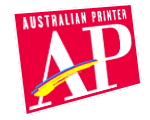New Zealand's first flexo apprentice retires
When Barry Caulton was offered the very first apprenticeship for flexographic printing in this country, he says they had to make the ink up by hand for the new machinery and hope that it would stick to the plastic. Now retiring from A P Woodham Limited after nearly 50 years in the printing industry, he says this is just one of many huge changes he’s seen.
Barry took up his five-year apprenticeship in 1954 with one of the leading plastics printing companies, Mono (later taken over by UEB) which printed plastic bags for most of the large bakers in the country. Mono was also one of the more progressive companies around, offering its staff a profit share scheme. This bolstered his apprentice wages giving him "reasonably good money for those days." The scheme also ensured Mono had a waiting list of people wanting to work there.
He says that in the early stages of the flexo industry, nearly everything was experimental.
"There were no rolls of polythene in New Zealand and no ink makers, so we had to make the ink up ourselves from imported dyes mixed with methylated spirits. I used to go home with red dye all around my neck sometimes, because it was so fine it simply floated in the air.
"We also made our own plates from rubber supplied by Reid Rubber and whenever we wanted to print a different size bag, we had to change the cylinder to fit the new size. It wasn’t a case of just snapping your fingers for everything like it is these days," he says.
While he enjoyed those early days of flexographic printing, Barry admits that today’s presses are able to achieve a finer detail in printing. And work practises are much safer these days.
"You could operate the machines without guards back then. You can’t do that today."







